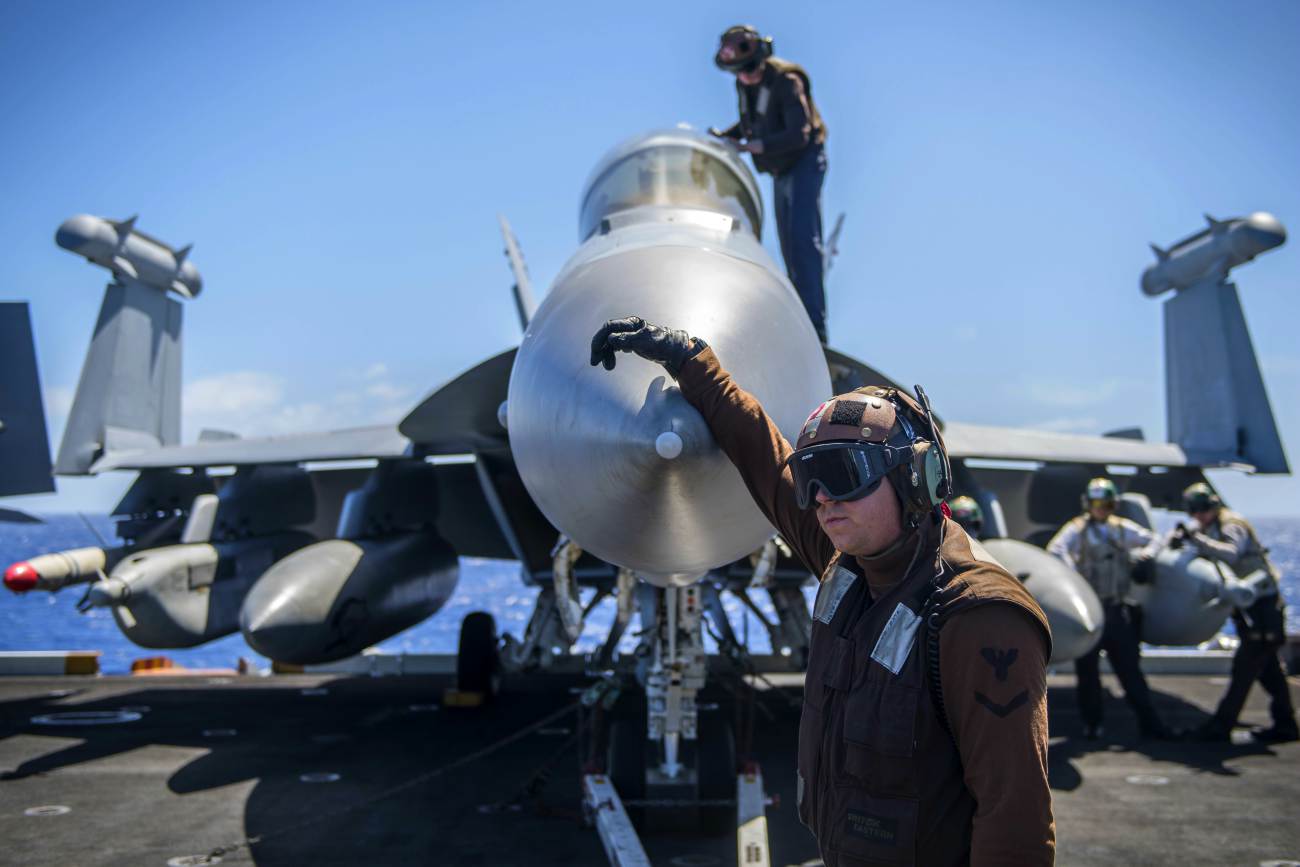Boeing EA-18G Growler Electronic Warfare Aircraft
Officially adopted for fleet use in 2008, the EA-18G “Growler” represents the new age in electronic aircraft technology. It is the Navy’s first electronic warfare aircraft with a new design in over three decades, and it is the fourth largest modification to the F/A-18 family. The EA-18G uses the latest electronic attack technology including an ALQ-218 receiver, ALQ-99 jamming pods, satellite communications and communication countermeasures. Therefore, it is considered the ultimate aircraft with regard to electronic jamming.
The EA-18G took the reigns from the EA-6B “Prowler” as the Navy‘s primary electronic attack aircraft. It’s a transition so noticeable that Aviation Structural Mechanic 3rd Class Matthew Morris called the Growler, “…the Rolls Royce of jets compared to the Prowler being an old Chevy.” However, with new opportunity comes new difficulties.
EA-18G Personnel
New isn’t always easy. Adjusting to the brand new capabilities of the aircraft is the biggest issue facing the Navy. For instance, the main difference between the EA-18G Growler and the EA-6B Prowler is that the Growler combines electronic warfare with a weapons system. Also, the technological interface is almost all brand new. Overcoming both of these issues is difficult, especially because there aren’t many pilots with experience flying both electronic attack aircraft as well as fighter mission aircraft.
The Prowler could not defend itself. Because it had no weapons system, every mission the Prowler executed required a fighter escort. Now, the Growler comes equipped with air-to-air defense mechanisms. Advanced medium-range air-to-air missiles (AMRAAM) give the EA-18G the power to defend itself. Because of this new option, the strike group commander can send the Growler on solo missions whereas before that was a high-risk option.
Training aircraft personnel is the biggest challenge in the advancement of the technology and capabilities of the EA-18G. The fleet-replacement squadron VAQ-129 “Vikings” were the first group responsible for the transition from the Prowler to the Growler. Also, they were tasked with training the next line of pilots and personnel.

Development and Background
Boeing and Northrop Grumman combined forces to create the EA-18G. The wings, forward fuselage, and final assembly were Boeing’s responsibility. The rear fuselage, aircraft body, and the entire electronics system were taken care of by Northrop Grumman.
Communication from plane to aircrew has streamlined with the latest technology available going into the EA-18G. With the Prowler, a total of 60 manhours were required between flights for maintenance efforts. Now, with better information sooner, the Growler only requires about 11 manhours.
The EA-18G is a carrier-based aircraft. It is the premier aircraft in terms of technical jamming and electronic protection. The first test flight was conducted in October of 2006, two years after it began production. Production began on a full scale in 2009 and the first deployment of the aircraft was in November of 2010.
As of 2014, over 100 EA-18Gs have been built with plans to continue to produce. Other countries have taken notice of this new machine, namely Australia. The island-continent purchased 12 of the aircraft in 2013, with the first one being delivered to the country in 2015. Additionally, this is the first time this level of intelligence was built and sold for another country.
See EA-18G Bomber Specifications
| Primary Function: Airborne Electronic Attack (AEA) |
| Date Deployed: First flight in October 2004. Initial operational capability (IOC) in September 2009 with the first deployment for VAQ-132 in November 2010. |
| Unit Cost: $74 million |
| Propulsion: Two F414-GE-400 turbofan engines. 22,000 pounds (9,977 kg) static thrust per engine |
| Length: 60.2 feet (18.5 meters) |
| Height: 16 feet (4.87 meters) |
| Wingspan: 44.9 feet (13.68 meters) |
| Weight: Weight empty: 33,094 lbs Recovery weight: 48,000 lbs |
| Ceiling: 50,000 feet |
| Range: Combat: 850+ nautical miles with two AIM-120, three ALQ-99, two AGM-88 HARM, two 480 gallon external fuel tanks |
| Crew: 2 |
| Armament: Two AIM-120, two AGM-88 HARM, three ALQ-99 |

